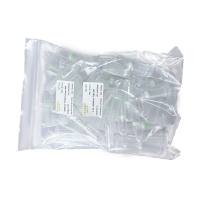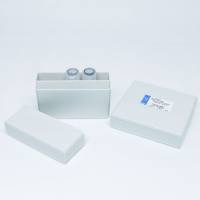The growth of metastases is the end result of a multistep process in which cancer cells invade through basement membranes, extravasate into bloodstream or lymphatic vessels, survive transit in the circulation, arrest, and then grow in the new site (1 ). Tissue culture traits that reliably predict the metastatic ability of cancer cells are rare, possibly because any particular assay, for example, invasion through extracellular matrix (2 ), or growth in semisolid agarose (3 ) can evaluate only a tumor cell’s ability to perform one step in the multistep process. Thus, animal models using transplantable tumors that produce a predictable number of metastases in suitable recipients are the standard test systems for analyzing the metastatic phenotype, and for evaluating the efficacy of antimetastatic agents. The discovery that tumor tissue could be xenografted into the mutant athymic “nude” mouse strain opened a new area for experimental studies with human tumor cells, including the analysis of their metastatic properties (1 ,4 ). Additional immunodeficient mouse strains are also available for human tumor experimentation. The combination of the nude and beige mutations produced athymic mice with reduced NK cell activity. The triple deficient beige (bg )/nude (nu)/xid mouse is functionally depleted of T and B cells and lack precursors of lymphokine activated killer (LAK) cells. Severe combined immune-deficient (SCID) mice, homozygous for the mutant gene scid , are severely deficient in both T and B cells (SCID mouse xenograft models of metastasis are described in Chapter 20 by Schumacher and Brooks). In comparisons of tumor take and metastasis of several human tumor cell lines in different immunodeficient mice, some differences were seen. Some cell lines produced a higher incidence of metastasis in the SCID vs nude mice (5 ,6 ). However, in another example, the incidence of metastasis of a human breast cancer cell line was lower in the triple deficient bg/nu/xid mice than in nude mice (4 ), suggesting that using a mouse with a more profound immunodeficiency does not guarantee that the implanted tumor cells will grow more aggressively. Ultimately, the choice of the strain will be dictated by the design of the experiment, as well as availability and expense. The procedures described in this chapter can be applied to any of the different immuno-deficient animals.






